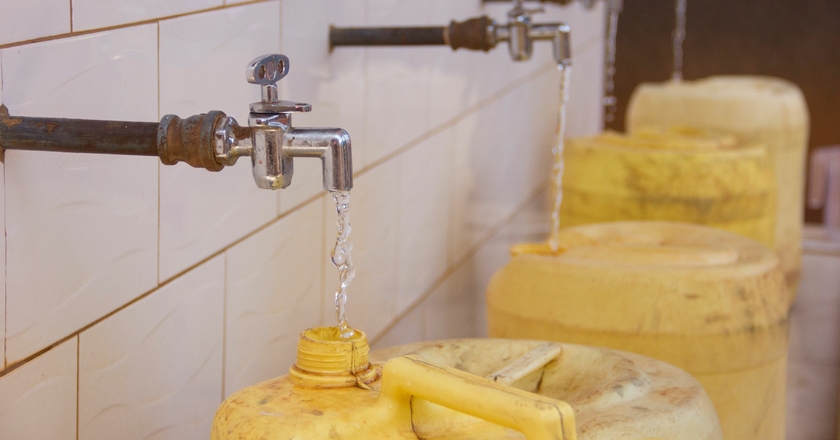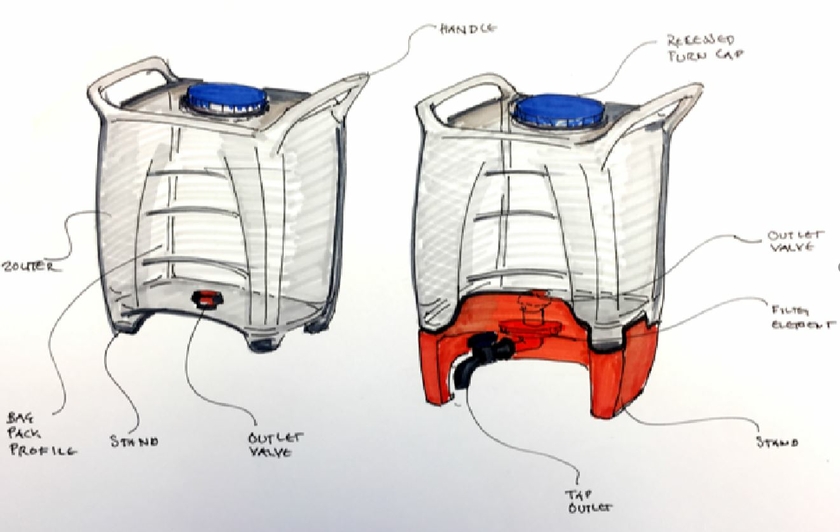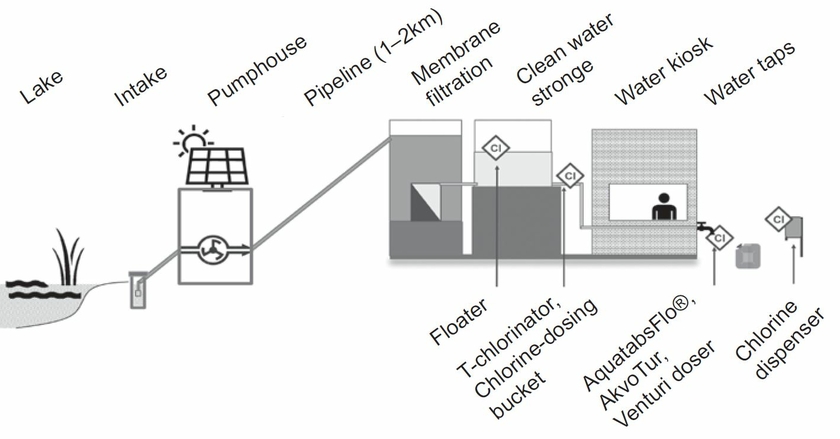Department Sanitation, Water and Solid Waste for Development
Strategies to reduce the recontamination of treated water during transport and storage

Water that is supplied at community level in hygienically critical environments commonly is subject to recontamination during transport and storage. The availability of products and approaches to reduce these recontamination risks are of high importance to assure safe water at the point of consumption, a critical indicator for achieving SDG 6.1. To provide a contribution towards this goal we are experimenting with different approaches to enhance safe storage such as secondary disinfection using UV-C LEDs in storage containers or passive low-cost system-level chlorination, and we are assessing cleaning strategies for water containers and the development of improved water transport containers.
Influence of container design & cleaning on reducing recontamination risk

Drinking water is frequently recontaminated during transport and storage when water is poured into contaminated water containers. The design of the container has an impact on water quality. Containers are often kept at ground level, making them easily accessible to children and animals, which could be a reason for water deterioration. Hence, it is important to cover containers with lids and to store them above floor level. Water often deteriorates during extraction due to contact with contaminated hands, cups, and ladles. Hands can be prevented from entering by integrating a spout for extracting water from the containers.
Containers with narrow openings impede contact with possible contamination sources and therewith reduce recontamination risk, but they also hinder systematic cleaning of the container’s inner walls. The regular use of drinking water containers without proper cleaning leads to the formation of a biofilm in the container. This biofilm harbours bacterial colonies, provides them with food for growth, protects them from disinfection, and it consumes free residual chlorine, thus increasing the risk of contaminating water that is poured into the containers.
In the this project we collaborate with the community and local NGOs in Uganda and Kenya and Zurich University of the Arts to assess the impact of residual disinfection in combination with cleaning containers with an improved design on water quality at the point of collection and at the point of consumption and we are assessing design elements, handling and acceptance of improved water containers by users.
System-level passive chlorination

Chlorinating water to provide residual disinfection is a strategy to reduce recontamination of treated water. However, individual users’ practice of chlorinating water at the household level often is inadequate and establishing the necessary level of compliance has been found to be difficult. The installation of a passive chlorinator at the point of collection could circumvent the need to establish user compliance and can potentially increase the proportion of chlorinated water provided to the consumer. Therewith the risk that contaminated water is consumed could be reduced.
In this project we are collaborating with the local communities and the NGOs Get Water Uganda, Helvetas Swiss Intercooperation in Nepal and Sandec’s Water Supply and Treatment Goup to assess:
a) the technical performance of different low-cost designs of non-electrically powered system-level chlorinators (dosing consistency, product durability, O&M requirements, water quality),
b) business model aspects (initial and recurring cost, revenue generation models involving different stakeholders, management approaches, availability of products and spare parts)
c) user perspective ( acceptability, taste perception and williness to pay for additional cost)
d) comparing the impact of system-level passive chlorination versus the promotion of household water treatment on drinking water quality at the point of consumption and on child health
